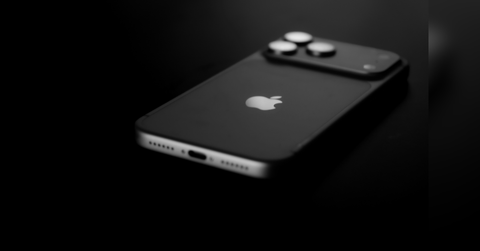 NEWS
NEWSiPhone 17’s New Brain: How Mobile Play Levels Up

Oct. 14 2025, Published 1:57 a.m. ET
A new processor does more than make numbers climb; it rearranges the rules of what fits in a pocket. With iPhone 17, the silicon story turns into a gameplay story — higher ceilings for complexity, steadier floors for frame pacing, and enough efficiency to keep sessions from melting into throttled blur.
In this cycle, genres stretch. Even familiar loops — including casual staples and quick-session formats such as casino games — gain headroom for smarter physics, cleaner animation timing, and livelier audio layers. The point is not spectacle for its own sake, but consistency: fewer dropped frames during peak effects, faster scene loads, and controls that feel less like commands and more like conversation.
The Shape of Speed
Raw throughput matters, but the distribution of power matters more. A next-gen CPU trims simulation spikes, while the GPU leans into advanced lighting and post-processing without turning the phone into a hand warmer. Machine-learning cores quietly handle the in-between: denoising shadows, upscaling textures, and predicting input intent to shave latency. The result is subtle — motion that reads as “true” rather than “busy.”
Thermals decide how long that truth lasts. The new processor’s efficiency curve favors sustained performance, meaning the twentieth minute of a boss run resembles the second. Battery behavior tracks the same logic: less heat, more minutes, fewer forced breaks when a commute becomes a campaign.
First Impressions: What Players Will Feel
The best upgrades are felt before they are named. Animations land cleaner when the frame time is stable; touch gestures register with less wobble when the pipeline is tight. Audio staging deepens as DSP headroom grows, so footsteps, weather, and ambient effects stop competing for space and start telling a coherent story.
Fast Wins On Day One
- Smoother Combat, Calmer Cameras — Tighter frame pacing and smarter motion blur remove the micro-stutter that used to rattle aim and tracking.
- Quicker Restarts, Snappier Loads — Faster storage paths mean a wipe is a reset, not a coffee break.
- Haptics With Range — More precise timing lets tiny rumbles cue reloads, parries, and gear shifts without drowning the hands.
- Controller Play Without Drama — Lower Bluetooth and input-to-photon latency make external pads feel console-clean on mobile.
- Battery That Backs You Up — Efficiency under load keeps sessions long and palms cool, so strategy beats battery anxiety.
Want OK! each day? Sign up here!
The Tools That Change Design
When Metal and ML pipelines do more, studios stop negotiating with limits and start designing to taste. Dynamic resolution can climb during quiet scenes and hold steady in chaos. On-device upscalers make mid-sized textures look premium. Ray-aware effects — reflections, soft shadows, emissive glows — become options, not experiments, used where they add mood rather than noise.
Networked games benefit too. Smarter background threads juggle chat, presence, and quick-match discovery without tripping the main loop. For players, that looks like instant lobbies and seamless spectating. For creators, it looks like freedom: more systems talking without asking the CPU for a permission slip.
The Battery–Performance Truce
Mobile gaming lives in the triangle of speed, heat, and time. The new processor redraws that triangle so it feels less like a trade-off. A performance mode can sprint when needed, then lean on efficiency cores for traversal, dialogue, or menus. That pacing reads as polish: intense when it counts, relaxed when it doesn’t, and never panicked about a low-power warning during the final mission.
What Developers Can Ship Next
The hardware unlocks design that used to belong to bigger boxes. Not everything needs to be louder; often, the win is clarity — scenes that read instantly, inputs that feel trusted, worlds that invite touch rather than tolerate it.
Roadmap Ideas Worth Building
- Readable Ray Lighting — Not neon fireworks; measured reflections and soft penumbras that add depth to stealth or puzzle timing.
- ML-Aided Enemies — Lightweight behavior models that adapt tactics without burning cycles or breaking fairness.
- Tactile Interfaces — Haptics mapped to material: glass taps, cloth swishes, metal clicks, all timed to frame-grade precision.
- Zero-Friction Co-Op — Drop-in sessions with state sync that survives notifications and spotty subway tunnels.
- High-Fidelity Short Sessions — Five-minute dungeons or sprints with console-grade feel, perfect for daily streaks.
Accessibility, Not Afterthought
Power makes space for care. Higher headroom allows scalable font rendering without blur, color-blind presets that preserve contrast in complex scenes, and audio descriptions that don’t fight the main mix. Motion-sensitive players can toggle camera smoothing without eating half the frame budget. Inclusivity stops being a compromise and becomes baseline craft.
The New Normal
Mobile gaming on iPhone 17 will not declare a new genre overnight. It will make familiar genres feel finished — the way a good instrument disappears and leaves only music. Sessions run longer without fatigue; inputs land with less negotiation; scenes look rich without busywork. That is how a processor upgrade becomes a design upgrade: by giving creators room to be specific and giving players confidence that the phone can keep up with their best run.
In short, the leap is not just faster. It is steadier, clearer, kinder to hands and battery. With that foundation, the next wave of mobile games can choose elegance over excess — and still feel unmistakably next-gen.


